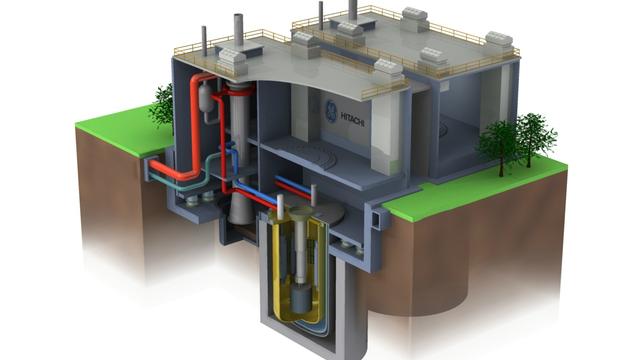Even the latest generation of nuclear power reactors can only harvest about five per cent of the energy stored in their radioactive fuel supplies, and the toxic leftovers must then be buried deep underground to slowly decay over hundreds of thousands of years. But thanks to a new breed of sodium-cooled pool reactor, we may soon be able to draw nearly 100 times more energy from nuclear fuels, while slashing their half-lives by two orders of magnitude.
The PRISM reactor (that’s Power Reactor Innovative Small Module, not the NSA’s spy program supreme) is the result of more than 60 years of research by the DoE, Argonne National Lab, and General Electric. Like other existing reactors, the PRISM harnesses the radioactive energy of artificial elements like plutonium to drive turbines which generate electrical current. The PRISM will just do so way, way faster and much more efficiently. Assuming, of course, one ever actually gets built.
In fact, according to GE’s Eric Lowen, it should — theoretically at least — be able to extract 99 times as much energy from a given unit of uranium than any reactor currently in use. This is due to the system’s use of liquid sodium as its coolant, rather than water. The liquid sodium doesn’t suck as much energy from radiating neutrons as water does and that extra energy in turn creates a more efficient fission reaction. And not only does this generate more electrical power per unit of fuel, it drastically reduces the half-life of the remainder — only about 300 years, down from the 300,000 years of conventional nuclear waste. The reactor itself will produce an expected 311 MW of electricity, though they will generally operate in 622 MW pairs over their 60 year service lives.
Six decades really isn’t that long but these reactors are so efficient that they could, again in theory at least, consume the entirety of Great Britain’s nuclear stockpile over that duration. Heck, the 140-metric ton stockpile in the town of Sellafield, along England’s northern coast, alone could be used to power the whole of Britain for 100 years with a fraction of the waste that conventional reactors produce.
We’ve got a while before that estimate can be confirmed, however. The UK Nuclear Decommissioning Authority is currently reviewing PRISM technology along with a number of other options to reduce, if not eliminate, its nuclear stockpile. A report released this past January stated that PRSIM “should also be considered credible, although further investigation may change this view.” Either way, the UK government doesn’t appear to be in much of a hurry to decide — a PRISM reactor, should it be chosen, wouldn’t likely come online until around 2030. [GE Reports – GE 1, 2 – The Engineer – The Ecologist]
Lead image: GE Hitachi
